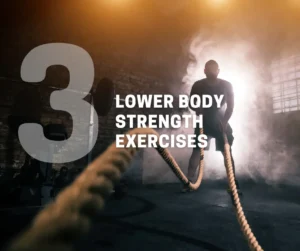Building a strong body is not just about aesthetics; it’s about functionality and longevity. Whether you’re a fitness enthusiast or a beginner, incorporating the right exercises into your routine can make a significant difference in your overall strength and well-being.
Understanding Strength Training
Strength training involves exercises that target specific muscle groups to improve strength, endurance, and muscle mass. Contrary to common misconceptions, strength training is not just for bodybuilders but for anyone looking to enhance their physical abilities and health.
Key Components of a Strong Body
Muscle strength is crucial for everyday activities, from lifting groceries to maintaining posture. By engaging in personal boxing training, you not only increase muscle mass but also improve bone density, metabolism, and overall body composition.
Best Exercises for Full-Body Strength
When it comes to building a strong body, incorporating a variety of exercises is key. Compound exercises, which target multiple muscle groups simultaneously, are particularly effective in maximizing strength gains.
Upper Body Strength Exercises

- Push-ups: A classic bodyweight exercise that targets the chest, shoulders, and triceps.
- Pull-ups: Excellent for working the back, biceps, and forearms.
- Dumbbell Bench Press: Strengthens the chest, shoulders, and triceps. Using dumbbells allows for a greater range of motion compared to a barbell.
- Dumbbell Rows: Targets the back muscles, particularly the latissimus dorsi, rhomboids, and traps. Helps improve posture and balance muscle development.
Lower Body Strength Exercises

- Squats: Engage the quadriceps, hamstrings, glutes, and core for overall lower body strength.
- Deadlifts: Focus on the posterior chain, including the hamstrings, glutes, and lower back.
- Lunges: Target the quadriceps, hamstrings, and glutes while improving balance and stability.
Core Strength Exercises
- Planks: Strengthen the core muscles, including the abdominals, obliques, and lower back.
- Russian Twists: Work the obliques and improve rotational stability.
- Leg Raises: Target the lower abdominals while also engaging the hip flexors.
Incorporating Flexibility and Mobility
While strength training is essential, so is flexibility and mobility. Incorporating stretching exercises into your routine can enhance range of motion, reduce the risk of injury, and improve overall performance.
Frequency and Progression
Consistency is key when it comes to strength training. Aim to incorporate strength exercises into your routine at least 2-3 times per week, gradually increasing the intensity and volume as you progress.
Safety Considerations
To prevent injuries, always prioritize proper form and technique during exercises. Additionally, warming up before a workout and cooling down afterward can help prepare your body and aid in recovery.
Modifications for Different Fitness Levels
Whether you’re a beginner boxing classes or an experienced lifter, there are modifications and progressions available to suit your fitness level and goals. Start with lighter weights and simpler movements, gradually increasing the challenge as you become stronger.
Nutrition and Rest
A balanced diet rich in protein, carbohydrates, and healthy fats is essential for supporting muscle growth and recovery. Adequate rest and sleep are equally important, allowing your muscles to repair and grow stronger.
Staying Motivated
Setting realistic goals and finding activities you enjoy can help maintain motivation in your fitness journey. Whether it’s tracking progress or trying new exercises, staying engaged and consistent is key.
Tracking Progress
Monitoring your strength gains, body measurements, and performance in workouts can provide valuable feedback and motivation. Don’t be afraid to adjust your routine based on your progress and goals.
Conclusion
Incorporating the best exercises for full body workout into your routine can lead to significant improvements in your physical abilities and overall well-being. By focusing on compound movements, proper form, and consistency, you can build a strong and resilient body that supports you in all aspects of life.
FAQ’s
- Are these exercises suitable for beginners?
- Yes, many of these exercises can be modified to suit beginners’ fitness levels. Start with lighter weights or variations that require less resistance.
- How often should I do strength training?
- Aim for at least 2-3 sessions per week, allowing for adequate rest between workouts to facilitate muscle recovery and growth.
- Can strength training help with weight loss?
- Yes, strength training can aid in weight loss by increasing muscle mass, which boosts metabolism and burns more calories at rest.
- Do I need to lift heavy weights to get stronger?
- Not necessarily. While lifting heavier weights can stimulate muscle growth, using lighter weights with higher repetitions can also improve strength and endurance.
- Is it necessary to consult a fitness professional before starting strength training?
- While not mandatory, consulting a fitness professional can provide valuable guidance on proper form, exercise selection, and creating a tailored workout plan based on individual goals and limitations.
Read our best exercise blog:
Boxing Burns More Calories Than Anything on Earth

